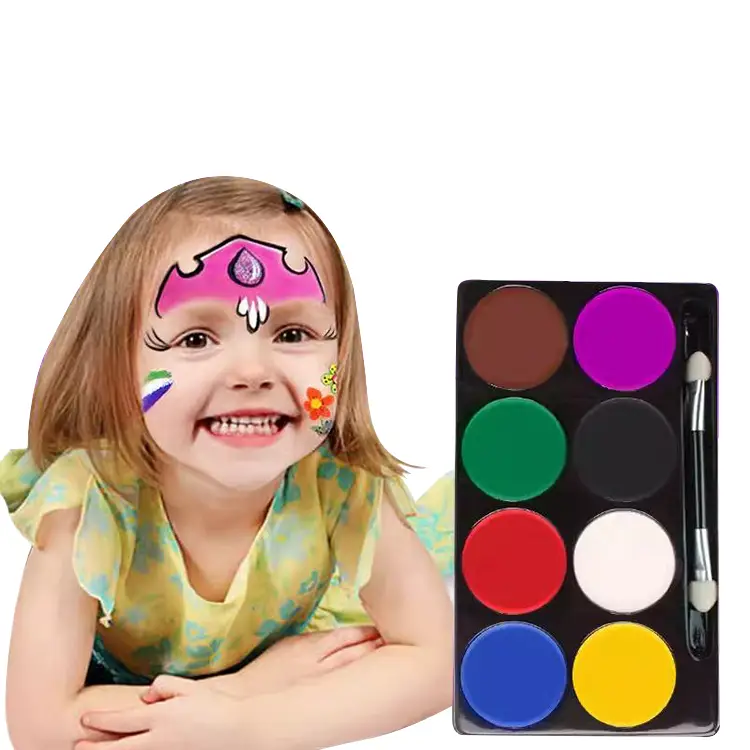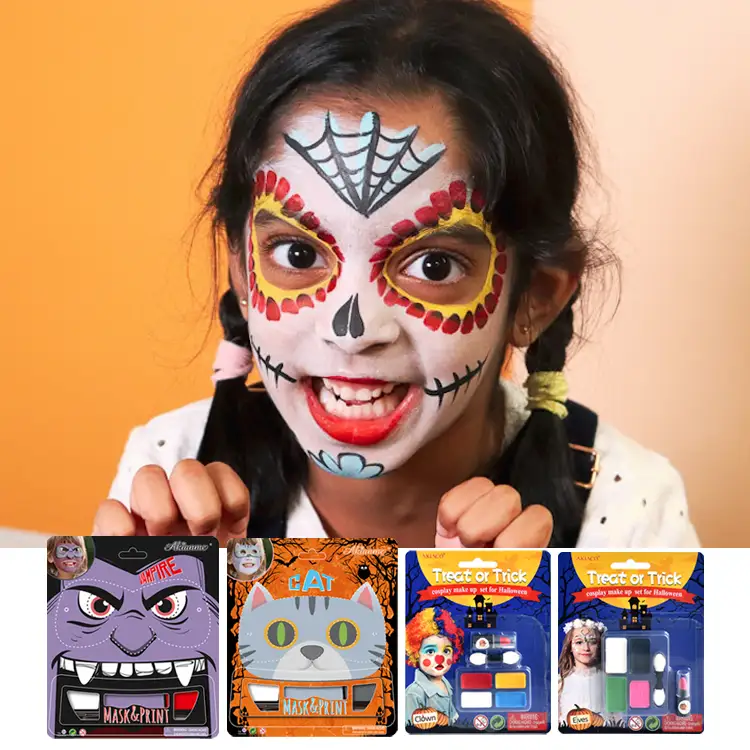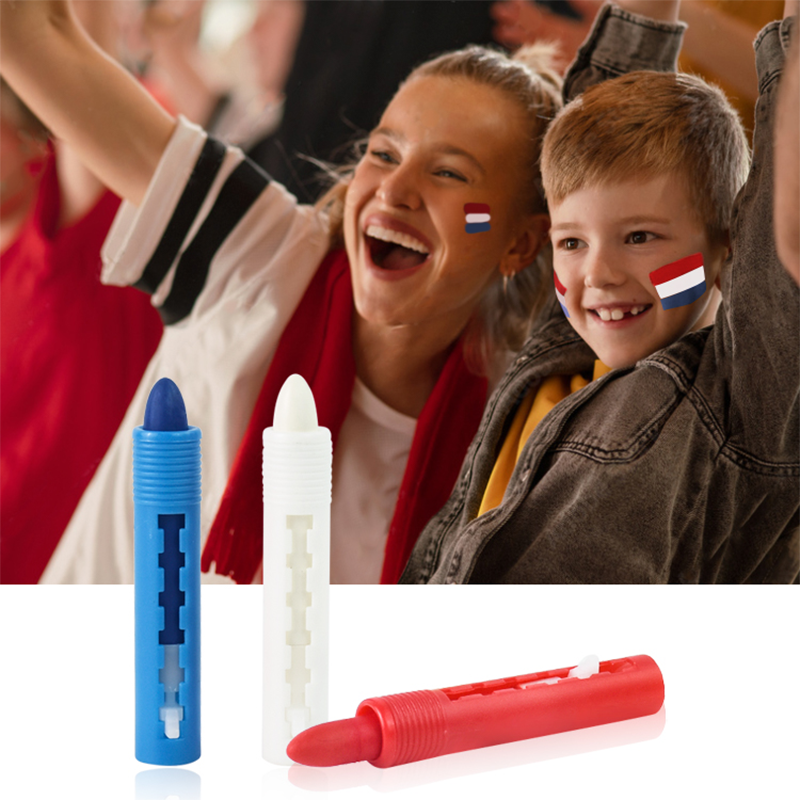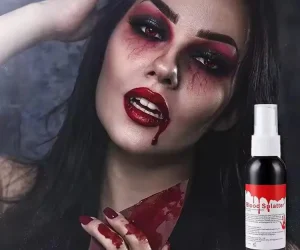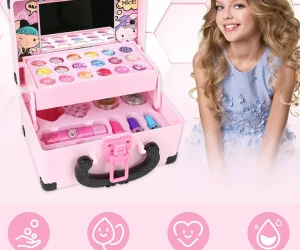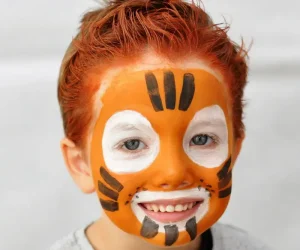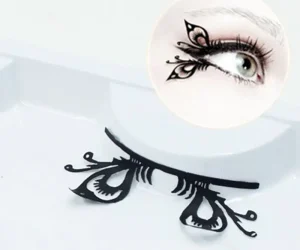How to Prep Your Face for Face Paint: Essential Steps
Table of Contents
Before brushes touch skin, a little prep goes a long way. Clean and ready skin lowers the chance of irritation and helps the paint stay put. Think of it like priming a canvas before adding color—it’s the quiet step that shapes everything that follows.
The link between preparation and skin safety
Children’s skin is thinner than adult skin, which makes it more reactive to outside products. Dermatology studies show that irritants and pigments can enter faster through unprepared skin (Source: National Center for Biotechnology Information, 2020). This is why cleansing before face paint is not just a routine—it is protection.
A story often told in kids’ theater circles is of a young actor who skipped washing his face before a show. After a few hours, he developed red patches that took days to fade. A quick wash with mild soap could have reduced the risk. It’s a small but key step in keeping the fun safe.
How prep helps face paint last longer
When skin is oily or sweaty, paint slides off or cracks more quickly. A clean, dry face creates a smoother base, allowing pigments to stick evenly. Some performers even say prepping is like “setting the stage” before the main act—it helps the art stay sharp under lights.
Another common tip from makeup artists is to moisturize lightly before painting. Too much cream makes paint smear, but just enough hydration prevents flaking. The balance matters. Parents who prep their child’s skin often notice that designs look brighter and don’t fade halfway through the party.
Start with Clean Skin: Washing Your Face Properly
Clean skin is the base for any face paint. Without it, colors may not sit right, and the risk of irritation increases. Think of it as wiping a chalkboard before drawing. A clear surface makes the art smoother and easier to work with.
Choosing gentle cleansers for kids and adults
Not all soaps are equal. Many everyday cleansers have strong surfactants that strip too much oil and can upset the skin barrier. Pediatric dermatologists often suggest mild, fragrance-free cleansers, especially for kids (American Academy of Dermatology, 2021).
For adults, gentle foaming washes or cream cleansers often work well. The idea is to avoid products that sting or leave the skin tight. One stage mom shared that after switching to a baby cleanser for her child’s pre-show prep, she noticed fewer complaints of itchy skin after long rehearsals.
Why removing dirt and oils is the first step
Dirt and natural oils can block pigments from sticking evenly. If left behind, they create patches where face paint cracks or fades faster. A quick rinse clears that barrier. Think of it as clearing crumbs off a table before setting down paper.
In some cases, skipping this step can shorten how long designs last. One outdoor festival reported that kids who washed up first kept their painted butterflies and tigers intact well past sunset, while others needed touch-ups by midday. Prep may be simple, but it shows in the results.
Hydration Matters: Moisturizing Before Face Paint
Moisturizing is not just about comfort. It sets a smoother base for face paint and helps the skin handle pigments better. Without moisture, paint may cling unevenly to dry patches, making designs look rough or flaky.
Lightweight moisturizers vs. heavy creams
Lightweight moisturizers, like gels or water-based lotions, soak in quickly and don’t leave much residue. They are often suggested by dermatologists for pre-makeup prep because they support hydration without blocking pores (Mayo Clinic, 2022).
Heavy creams, on the other hand, tend to sit on the skin’s surface. While good for nighttime repair, they can mix with paint and cause it to smear. One art teacher recalled that during a school play, kids who used a light lotion had crisp designs, while those with thick creams ended up with smudged whiskers.
Balancing hydration without making skin greasy
Too much product can make the skin slippery, and face paint may slide right off. The trick is balance—enough hydration to soften the skin but not so much that it feels sticky. A pea-sized amount is often enough for the whole face.
Parents sometimes test by touching the skin after moisturizing. If it feels soft but not shiny, the balance is right. At a summer fair, one painter said she always waited two minutes after moisturizing before applying colors, and this simple pause kept the artwork intact through the heat.
The Role of Primers in Face Painting Prep
Primers often sound like a fancy extra step, but they can make a real difference. They create a smoother surface, reduce patchiness, and help paint stick evenly to the skin.
Do you really need a primer for face paint?
Not always. For short events, washing and moisturizing may be enough. But for longer wear, a primer can prevent colors from breaking down. Dermatologists note that primers often contain silicones, which fill in small lines and help makeup grip better (American Academy of Dermatology, 2021).
Think of it like painting a wall. Without primer, the paint might soak in unevenly. With it, the surface is more predictable. One parent described a birthday party where their child’s face tiger stripes lasted until evening—thanks to a thin layer of primer.
Benefits of a barrier between skin and paint
Primers can also act as a barrier. This means pigments are less likely to come into direct contact with skin, which lowers the chance of irritation. For kids with sensitive skin, this layer can make the difference between fun designs and an itchy rash.
In one community fair, painters noticed fewer cases of redness when kids used a primer base. The barrier worked like a shield, allowing the artwork to stay bright while keeping skin calm. It’s not magic, just science and a little prep.
Special Considerations for Sensitive Skin
Not every face reacts the same way to paint. Children and adults with sensitive skin need extra care before applying any colors. Small steps can help avoid big problems.
Patch testing paints and prep products
Before a full design, try a patch test. Apply a little paint or primer on the inside of the arm or behind the ear. Wait a few hours to see if redness, bumps, or itching show up. Dermatologists often recommend this simple step because many reactions appear within 24 hours (Mayo Clinic, 2020).
Imagine a child at a school carnival. One quick patch test in the morning helped the parent know it was safe to go ahead with the full butterfly design later that day. A few minutes of testing can save hours of discomfort.
Hypoallergenic options and avoiding irritants
Some paints and prep products are labeled “hypoallergenic.” While this doesn’t guarantee zero reactions, they usually avoid strong fragrances, harsh preservatives, or certain dyes known to cause irritation. Parents can also scan ingredient lists for parabens or formaldehyde-releasing agents, which dermatology groups flag as common triggers.
For example, a teacher noticed that kids who used fragrance-free moisturizers before face painting rarely complained about stinging. Choosing gentle, minimal formulas helps the fun stay fun, without unwanted side effects.
Sun Protection and Face Paint: What to Know
When face painting outdoors, the sun adds another layer of concern. Skin needs protection, but sunscreen and paint don’t always mix well. Knowing how to handle both makes a big difference.
Can you apply sunscreen under face paint?
Yes, but it depends on the type. Mineral sunscreens with zinc oxide or titanium dioxide tend to sit better under paint than chemical formulas. They create a thin shield without breaking down colors. Dermatology studies show that mineral sunscreens are less likely to cause stinging, especially for kids (AAD, 2021).
Think of it like layering clothes: sunscreen first, then paint. But wait a few minutes for the sunscreen to dry before adding colors. Otherwise, designs may smudge or slide right off.
Safer alternatives when painting outdoors
If painting outside for a short event, using a wide-brim hat or seeking shade may work better than layering sunscreen and paint together. Some parents also prefer UV-protective clothing for kids with very sensitive skin.
One community fair found success by offering painted designs on arms instead of faces when the sun was intense. This kept the fun alive while lowering the risk of sunburn or irritation. Sometimes, the best solution is to rethink the canvas.
Preparing Different Areas of the Face
Not every part of the face is the same. The skin around the eyes, lips, and cheeks reacts differently to paint. Prepping each area with care helps avoid discomfort and makes designs look cleaner.
Prepping the eye area for detailed designs
The eye area has thinner skin and is more sensitive than the rest of the face. A mild moisturizer or eye-safe primer can add a smooth layer for paint to hold onto. Always avoid products with fragrance here, since they can sting.
Artists often recommend leaving a small gap between the lash line and paint. This helps reduce the chance of irritation or smudging when kids blink. If glitter is used, only cosmetic-grade glitter should go near eyes.
Tips for prepping lips and cheeks for paint
Lips are tricky since they move a lot and can be dry. A thin layer of balm before paint keeps colors from cracking. Clear balms work best, as tinted ones may mix with the paint.
Cheeks, on the other hand, usually handle paint well but can get oily. A light dusting of translucent powder before painting helps absorb oil and keeps designs steady. Many painters find this step useful at parties where kids run around and sweat.
Hygiene Tips Before and During Face Painting
Good hygiene is just as important as the paints themselves. Clean tools and careful habits lower the chance of breakouts or infections during face painting.
Why clean brushes and sponges matter
Brushes and sponges can trap old paint, oils, and even bacteria. If they are not cleaned, every new use spreads that mix onto the skin. A quick wash with mild soap and water before each session keeps them safer to use.
Some artists also keep extra sponges ready. Swapping them out instead of reusing the same one on different kids helps prevent skin problems and keeps designs looking fresh.
Preventing bacteria transfer to the skin
Sharing makeup tools without cleaning is one of the fastest ways germs spread. Simple steps, like washing hands first and using separate applicators, make a big difference.
It also helps to avoid painting over cuts, rashes, or already irritated areas. Even small scratches can be an easy entry point for bacteria. Parents and artists should always check the skin before starting.
What Not to Do When Prepping Your Face
Even simple mistakes can ruin face paint or irritate skin. Knowing what to avoid ensures both safety and a smooth, vibrant design.
Skipping moisturizer or primer
Skipping moisturizer or primer may seem harmless, but it can make paint stick unevenly. Dry patches absorb pigment differently, causing blotchy or faded designs. A light prep layer evens the surface and protects delicate skin.
Many painters notice that children who skip this step complain of tight, itchy skin after long painting sessions. Moisturizer and primer act as a small but crucial shield.
Using harsh scrubs right before painting
Exfoliating or using strong scrubs just before face paint can leave skin sensitive and red. Tiny abrasions may even cause pigment to sting or settle unevenly.
For example, a child who used a scrub before a school fair ended up with irritated cheeks, and the paint didn’t last. Gentle cleansing and light hydration are safer alternatives, leaving the skin ready for color without damage.
Removing Face Paint Safely After the Event
Removing face paint properly is just as important as prepping the skin. Gentle techniques prevent irritation and keep the skin healthy for future sessions.
Step-by-step makeup removal routine
Start by using a soft, damp cloth or cotton pad to wipe off the top layer of paint. For stubborn pigments, a gentle cleanser or micellar water works well. Avoid harsh soaps or scrubbing, as these can irritate delicate skin.
After the bulk of the paint is removed, rinse the face with lukewarm water and pat dry with a soft towel. Repeating the process carefully ensures no residual pigments remain, which can prevent breakouts or staining.
Soothing the skin after heavy designs
Once the paint is removed, apply a thin layer of gentle moisturizer or aloe-based gel. This helps replenish hydration and calm any minor redness or irritation from the pigments.
For children, a fun ritual of letting them choose a soothing balm or soft towel can make removal enjoyable and stress-free. Over time, this routine helps protect the skin and makes future face painting sessions safer and more comfortable.
Conclusion
Proper prep is key to safe and vibrant face painting. Cleansing, moisturizing, using gentle primers, and following hygiene steps protect skin and help designs last. With careful prep and removal, face paint becomes a fun, safe, and creative experience for kids and adults alike.
FAQ
It’s best to wait 1–2 minutes after applying a light moisturizer. This allows the skin to absorb the product and prevents the paint from sliding or mixing unevenly, ensuring a smoother finish and longer-lasting design.
Yes, a gentle makeup primer can work as a barrier between skin and paint. Choose a hypoallergenic, fragrance-free formula to avoid irritation. A thin layer helps the pigments adhere evenly and prevents smudging.
Patch testing is recommended, especially for children with sensitive skin. Apply a small amount on the inner arm or behind the ear and wait a few hours. This helps detect allergic reactions before full-face application.
For oily skin, start with a gentle cleanser and follow with a lightweight moisturizer. Lightly dusting translucent powder on oily areas can absorb excess oil, giving the paint a smooth surface and helping designs last longer.
Yes. Use fragrance-free, hypoallergenic products for eyelids and thin balm for lips. Avoid painting too close to lashes, and ensure sensitive areas are clean and hydrated to prevent irritation while maintaining crisp designs.

